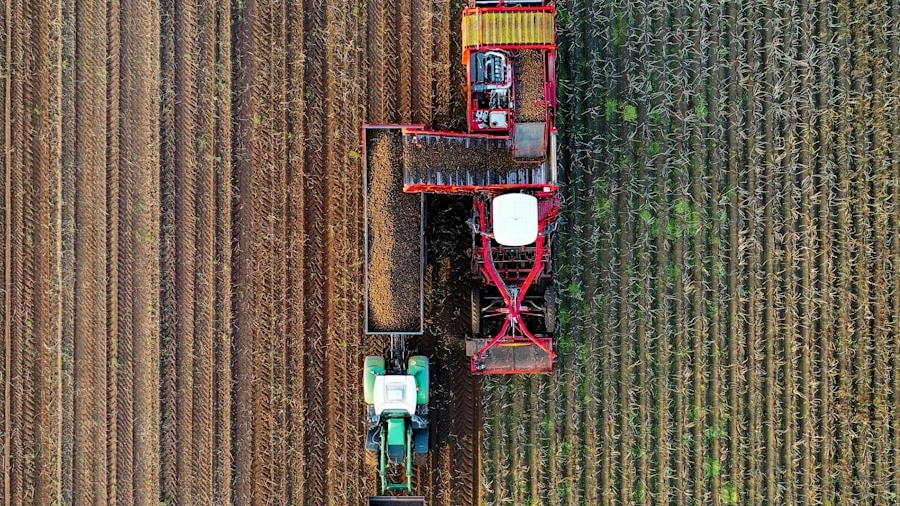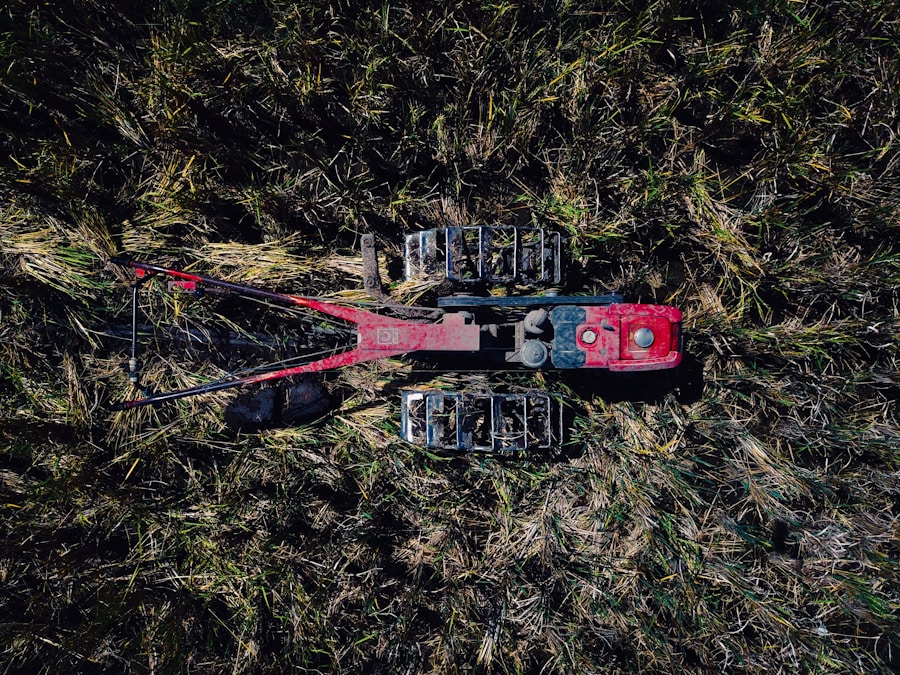The advent of artificial intelligence (AI) has revolutionized numerous industries, and agriculture is no exception. AI-powered drones have emerged as a transformative tool, enabling farmers to enhance productivity, optimize resource use, and make informed decisions based on real-time data. These unmanned aerial vehicles (UAVs) are equipped with advanced sensors and imaging technologies that allow them to gather and analyze vast amounts of information from the fields.
By integrating AI algorithms, these drones can process data efficiently, providing insights that were previously unattainable through traditional farming methods. The integration of AI into drone technology has opened up new avenues for precision agriculture. Farmers can now monitor crop health, assess soil conditions, and even predict yields with unprecedented accuracy.
The ability to collect and analyze data from above allows for a comprehensive understanding of agricultural landscapes, enabling targeted interventions that can significantly improve crop performance. As the global population continues to rise, the demand for food production increases, making the role of AI-powered drones in agriculture more critical than ever.
Key Takeaways
- AI-powered drones are revolutionizing the agricultural industry by providing advanced capabilities for monitoring and analysis.
- Thermal scanning is crucial in agriculture for identifying crop health, irrigation needs, and pest infestations.
- AI-powered drones utilize thermal imaging technology to provide real-time data and insights for farmers and agronomists.
- The benefits of using AI-powered drones for thermal scanning in agriculture include increased efficiency, cost savings, and improved crop yields.
- Challenges and limitations of AI-powered drones in thermal scanning include regulatory restrictions, data processing limitations, and initial investment costs.
The Importance of Thermal Scanning in Agriculture
Early Detection of Issues
This technology is particularly valuable in identifying issues such as irrigation deficiencies, pest infestations, and disease outbreaks before they become visible to the naked eye. The ability to detect these problems early can lead to timely interventions that save crops and resources.
Optimizing Irrigation Practices
In addition to monitoring plant health, thermal scanning plays a crucial role in optimizing irrigation practices. Water management is a significant concern for farmers, especially in regions prone to drought or water scarcity. By utilizing thermal imaging, farmers can identify areas of their fields that require more or less water, allowing for precise irrigation strategies that conserve water while ensuring crops receive the necessary hydration.
Promoting Sustainability
This not only enhances crop yields but also promotes sustainable farming practices by reducing water waste.
How AI-Powered Drones Are Utilizing Thermal Imaging Technology
AI-powered drones are at the forefront of utilizing thermal imaging technology in agriculture. Equipped with specialized thermal cameras, these drones can fly over fields and capture high-resolution thermal images that reveal temperature variations across the landscape. The integration of AI algorithms allows for the rapid processing of this data, enabling farmers to receive actionable insights almost in real-time.
For instance, machine learning models can analyze historical data alongside current thermal images to predict future crop performance and identify potential issues. The synergy between AI and thermal imaging extends beyond mere data collection; it involves sophisticated analysis that can discern patterns and anomalies within the agricultural environment. For example, AI algorithms can classify areas of a field based on temperature readings, identifying zones that may be experiencing stress due to insufficient irrigation or nutrient deficiencies.
This level of analysis empowers farmers to make data-driven decisions that enhance crop management strategies and improve overall farm efficiency.
Benefits of Using AI-Powered Drones for Thermal Scanning in Agriculture
The benefits of employing AI-powered drones for thermal scanning in agriculture are manifold. One of the most significant advantages is the ability to conduct large-scale monitoring with minimal labor input. Traditional methods of assessing crop health often require extensive ground surveys, which can be time-consuming and labor-intensive.
In contrast, drones can cover vast areas in a fraction of the time, providing comprehensive data that would be impractical to gather manually. Moreover, the precision offered by AI-powered drones leads to more targeted interventions. By identifying specific areas within a field that require attention, farmers can allocate resources more efficiently, whether it be water, fertilizers, or pesticides.
This targeted approach not only reduces costs but also minimizes environmental impact by preventing over-application of inputs. Additionally, the data collected through thermal scanning can be integrated with other agricultural technologies, such as soil sensors and weather stations, creating a holistic view of farm conditions that enhances decision-making processes.
Challenges and Limitations of AI-Powered Drones in Thermal Scanning
Despite their numerous advantages, AI-powered drones face several challenges and limitations in the realm of thermal scanning for agriculture. One significant hurdle is regulatory compliance. Many countries have stringent regulations governing drone usage, particularly concerning flight altitude, airspace restrictions, and privacy concerns.
Navigating these regulations can be complex for farmers looking to adopt drone technology, potentially hindering widespread implementation. Another challenge lies in the technical limitations of current drone technology. While advancements have been made in sensor capabilities and battery life, there are still constraints regarding flight duration and payload capacity.
Drones may struggle to cover extensive agricultural areas in a single flight due to battery limitations or may require frequent recharging or swapping out batteries. Additionally, adverse weather conditions such as high winds or rain can impede drone operations, limiting their effectiveness during critical growing periods.
Case Studies of Successful Implementation of AI-Powered Drones in Agriculture
Several case studies illustrate the successful implementation of AI-powered drones for thermal scanning in agriculture. One notable example is the use of drones by a large-scale vineyard in California’s Napa Valley. The vineyard employed drones equipped with thermal cameras to monitor vine health throughout the growing season.
By analyzing temperature variations across different sections of the vineyard, they were able to identify areas experiencing water stress early on. This proactive approach allowed them to adjust irrigation schedules accordingly, resulting in improved grape quality and yield. Another compelling case study comes from a rice farm in Southeast Asia that integrated AI-powered drones into its operations.
The farm utilized thermal imaging to assess water levels in rice paddies during critical growth stages. By identifying areas where water was either insufficient or excessive, the farm was able to optimize its irrigation practices significantly. This not only enhanced crop yields but also reduced water usage by 30%, showcasing how technology can drive sustainability in agriculture.
Future Potential and Developments in AI-Powered Drones for Thermal Scanning
The future potential for AI-powered drones in thermal scanning within agriculture is vast and promising. As technology continues to evolve, we can expect advancements in sensor capabilities that will enhance the accuracy and resolution of thermal imaging.
Furthermore, the development of more sophisticated AI algorithms will enable drones to analyze data with greater precision and speed. Machine learning models will become increasingly adept at predicting crop performance based on historical data trends and real-time observations. This predictive capability could revolutionize how farmers plan their planting and harvesting schedules, ultimately leading to higher yields and reduced waste.
Additionally, as drone technology becomes more accessible and affordable, smallholder farmers will have greater opportunities to leverage these tools for their benefit.
The Impact of AI-Powered Drones on the Future of Agriculture
The impact of AI-powered drones on the future of agriculture is profound and multifaceted. By harnessing the power of thermal scanning technology, these drones are transforming how farmers monitor crop health and manage resources. The ability to gather real-time data from above allows for more informed decision-making processes that enhance productivity while promoting sustainability.
As we look ahead, it is clear that the integration of AI-powered drones into agricultural practices will continue to evolve. With ongoing advancements in technology and increasing awareness among farmers about the benefits of precision agriculture, we can anticipate a future where these tools play an integral role in feeding a growing global population sustainably. The journey towards smarter farming practices has only just begun, but the potential for positive change is immense as we embrace the capabilities offered by AI-powered drones in agriculture.
A related article to “How AI-Powered Drones Are Conducting Thermal Scanning in Agriculture” is “How Smartwatches Are Enhancing Connectivity.” This article discusses the various ways in which smartwatches are revolutionizing the way we stay connected and interact with technology. To learn more about the impact of smartwatches on connectivity, you can check out the article here.
FAQs
What are AI-powered drones?
AI-powered drones are unmanned aerial vehicles equipped with artificial intelligence technology that allows them to perform tasks autonomously, such as image recognition, data analysis, and decision-making.
How are AI-powered drones used in agriculture?
AI-powered drones are used in agriculture for various tasks, including crop monitoring, soil analysis, and pest detection. They can also conduct thermal scanning to assess plant health and identify areas of stress or disease.
What is thermal scanning in agriculture?
Thermal scanning in agriculture involves using infrared technology to capture and analyze the heat emitted by plants. This can provide valuable insights into plant health, water stress, and disease detection.
How do AI-powered drones conduct thermal scanning in agriculture?
AI-powered drones use thermal cameras to capture infrared images of crops and vegetation. The captured data is then analyzed using artificial intelligence algorithms to identify areas of concern, such as plant stress or disease.
What are the benefits of using AI-powered drones for thermal scanning in agriculture?
Using AI-powered drones for thermal scanning in agriculture offers several benefits, including early detection of plant stress or disease, precise and efficient data collection, and the ability to cover large areas of farmland quickly and accurately.
Are there any limitations to using AI-powered drones for thermal scanning in agriculture?
Some limitations of using AI-powered drones for thermal scanning in agriculture include the initial investment cost, the need for skilled operators, and potential regulatory restrictions on drone usage in certain areas. Additionally, weather conditions and environmental factors can affect the accuracy of thermal scanning results.



